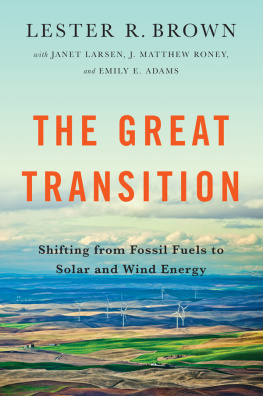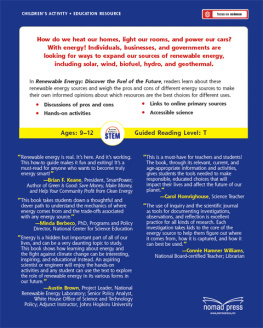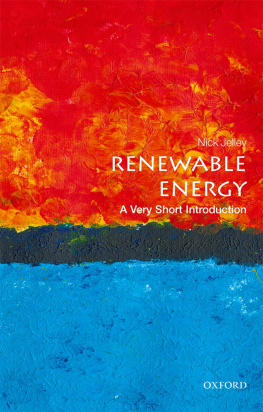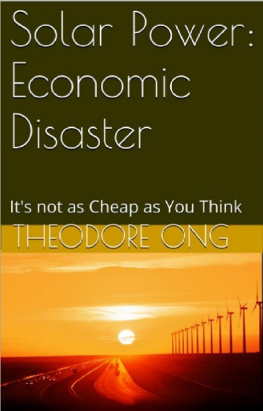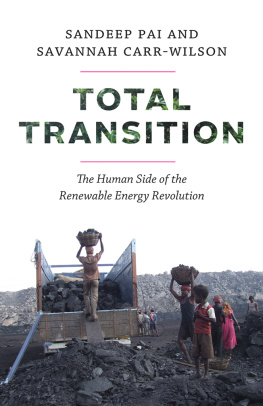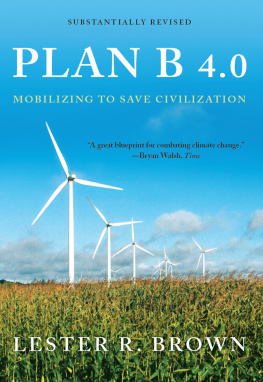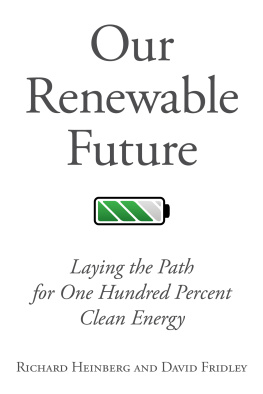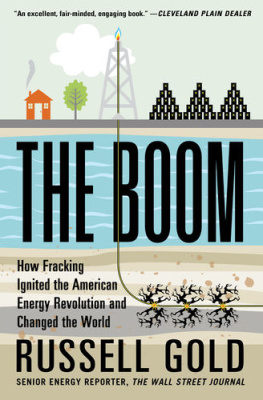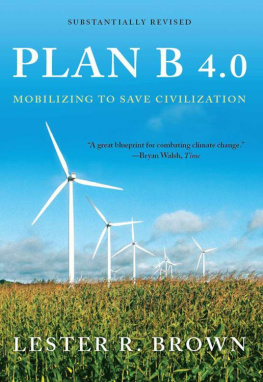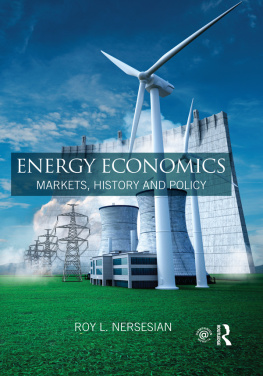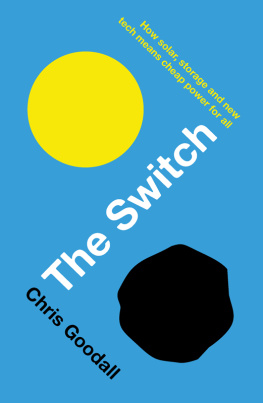
THE GREAT
TRANSITION
Shifting from Fossil Fuels to
Solar and Wind Energy
Lester R. Brown
with Janet Larsen, J. Matthew Roney,
and Emily E. Adams
EARTH POLICY INSTITUTE

For Abby, Bittle, Bridget,
Cal, Cash, Lena, Mandolyn,
and young people the world over
Contents
Measurements in this book are typically U.S. Standard units, except for tons, which are metric. Expanded data sets and additional resources are available at www.earth-policy.org.
Energy transitions are not new. Beginning several centuries ago, the world shifted from wood to coal. The first oil well was drilled over 150 years ago. Today we are at the start of a new energy transition, one that takes us from an economy run largely on coal and oil to one powered by the sun and the wind. This monumental shift, which is just getting under way, will compress a half-century of change into the next decade.
The purpose of this book is to describe how this great transition is starting to unfold. While the book cuts a wide swath and takes a global view, it is not meant to be a comprehensive study of the world energy economy. Each technology discussed here easily deserves its own book, as do many topics important to the transition that are not discussed in depth here, such as energy efficiency, the smartening of electrical grids, energy savings opportunities in industry, and batteries and other energy storage.
One hot technology, hydraulic fracturingor fracking, as it is commonly knownhas turned around declining production curves for oil and gas in the United States. Hailed for creating an energy revolution, fracking is also assailed for its disruption of human lives and the environment around each of the thousands of new wells being drilled each year. In this book we aim to give a sense of some of the trends that are creating a real energy revolution, not a short-term fix.
The sun is the primary source of energy. The world has long been dependent on fossilized sunlight in the form of coal, oil, and natural gasthe result of millions of years of heat and pressure on ancient organic material. On the one hand, these are exceptional fuels, extraordinarily dense with energy. Yet they are incredibly dirty, climate-disruptive, and ultimately exhaustible. Our descendants will one day shake their heads in wonder at how we could so quickly extract and burn up this inheritancemarring landscapes, clouding the skies, and destabilizing the earths climate in the process.
The great energy transition is a move away from fossil resources in favor of cleaner, non-depletable sources of energy. We focus primarily on solar and wind because of their low cost, rapid growth, and enormous potential. Every country can get energy from the sun or the wind, and each passing year it is getting cheaper to do so. Regardless of how much solar and wind energy we use today, it does not reduce the amount available tomorrow. Once the investment in solar installations or wind turbines is made, the fuel is free. Increasingly, Wall Street investors and savvy governments are recognizing this basic reality.
Fossil fuels have been heavily subsidized through government spending and tax policy, as well as more indirectly through their effects on our health and the environmentcosts that society bears. The good news is that coal consumption may have peaked in China as public discontent over air pollution there has grown to the point where the social cost of coal can no longer be ignored. If coal consumption continues to fall in China, which today uses more coal than all other countries combined, this fuel source may fade at the global level far faster than anyone imagined.
Nuclear power, whose cost is also distorted by enormous subsidies, can be ruled out by economics alone. Indeed, nuclears flawed economics are largely responsible for the decline in global nuclear electricity generation that began nearly a decade ago.
Meanwhile, solar and wind power installations are multiplying at a blistering pace. Solar and wind electricity generation records at both the state and the national level are regularly surpassed. Although the playing field remains unbalanced, wind and solar costs are falling so rapidly that they are starting to squeeze out coal.
While the cost of electricity from geothermal power plants has not fallen as fast, geothermal energy is an important source of baseload power generation in areas with an abundance of underground heat. It also can ramp up quickly when the sun sets or the wind slows. Hydropowercurrently the largest source of renewable energy by farplays the same role. But for most of the world, the era of large dam building is over. The 1.3 billion people still without electricity can get power from solar panels faster and at a far lower cost than from large hydropower projects, and with much less social disruption.
One source of renewable energy that we do not cover is plantsnamely biomass along with ethanol, biodiesel, and other plant-based transportation fuels. Biomass burned in power plants currently generates three times more electricity than solar, but it is growing far more slowly: 7 percent annually over the last three years versus 60 percent for solar.
The potential for biomass is limited. Plant material is far less energy-dense than fossil fuels. Given the great amount of energy that goes into producing plant-based fuels, the energy profits are narrow. And cars are ravenous consumers: filling the tank of a large SUV one time with ethanol takes as much grain as could feed a person for a whole year. Even if the vast U.S. corn crop were turned into ethanol, it would meet only 18 percent of American gasoline demand. Thus this book proposes shifting the transportation system from liquid fuels to electricity.
Given the global food situation, with close to a billion people undernourished and with farmers struggling to expand output fast enough to keep up with demand, the world will not be able to divert major land and water resources to energy production. Wind and solar projects win out here because, unlike fossil fuel or nuclear power plants, they do not require massive amounts of water for cooling, and their footprints on the land can be small.
As we were wrapping up this book at the close of 2014, a year that was shaping up to be the hottest on recorda record the world keeps breaking anew with alarming frequencywe realized that we are in a race. It is a race between tipping points. Can the worlds economies move to wind and solar fast enough to avoid crossing key thresholds that could cause climate change to spiral out of control? Or will we continue down a dead-end street, trying to eke every last hydrocarbon out of the ground until we are all cooked?
The old energy economy was tightly controlled by those who held fossil fuel deposits. The new energy economy is much more democratic. The wind and the sun can be tapped wherever people live. The Great Transition provides glimpses of this new energy economy that is just starting to emerge.
Earth Policy Institute
January 2015
1350 Connecticut Ave. NW, Suite 403
Washington DC 20036
Phone: (202) 496-9290
epi@earth-policy.org
www.earth-policy.org
The Great Transition
The worldwide transition from fossil fuels to renewable sources of energy is under way. As fossil fuel resources shrink, as air pollution worsens, and as concerns about climate instability cast a shadow over the future of coal, oil, and natural gas, a new world energy economy is emerging. The old economy, fueled largely by coal and oil, is being replaced with one powered by solar and wind energy.
Next page
